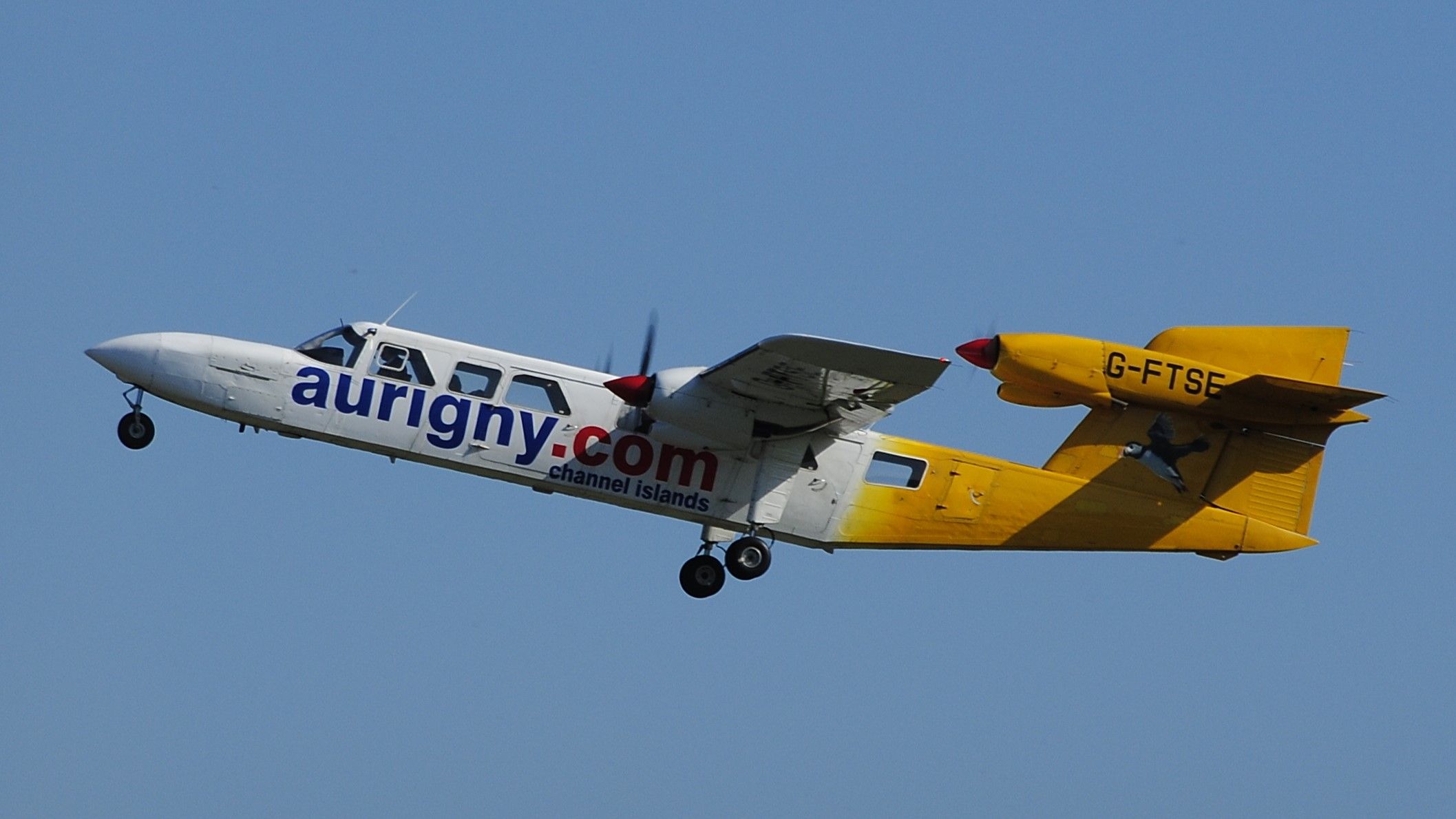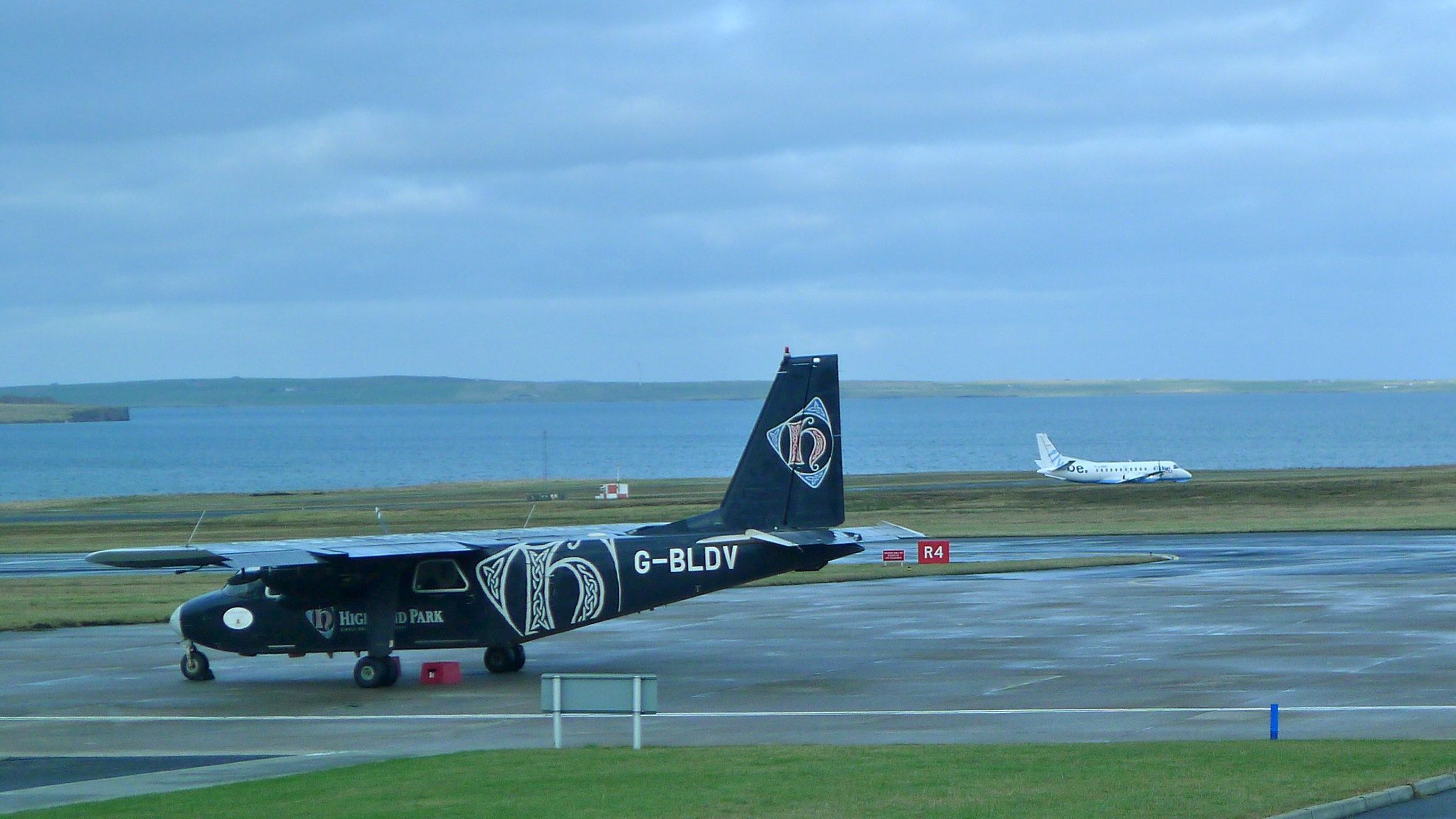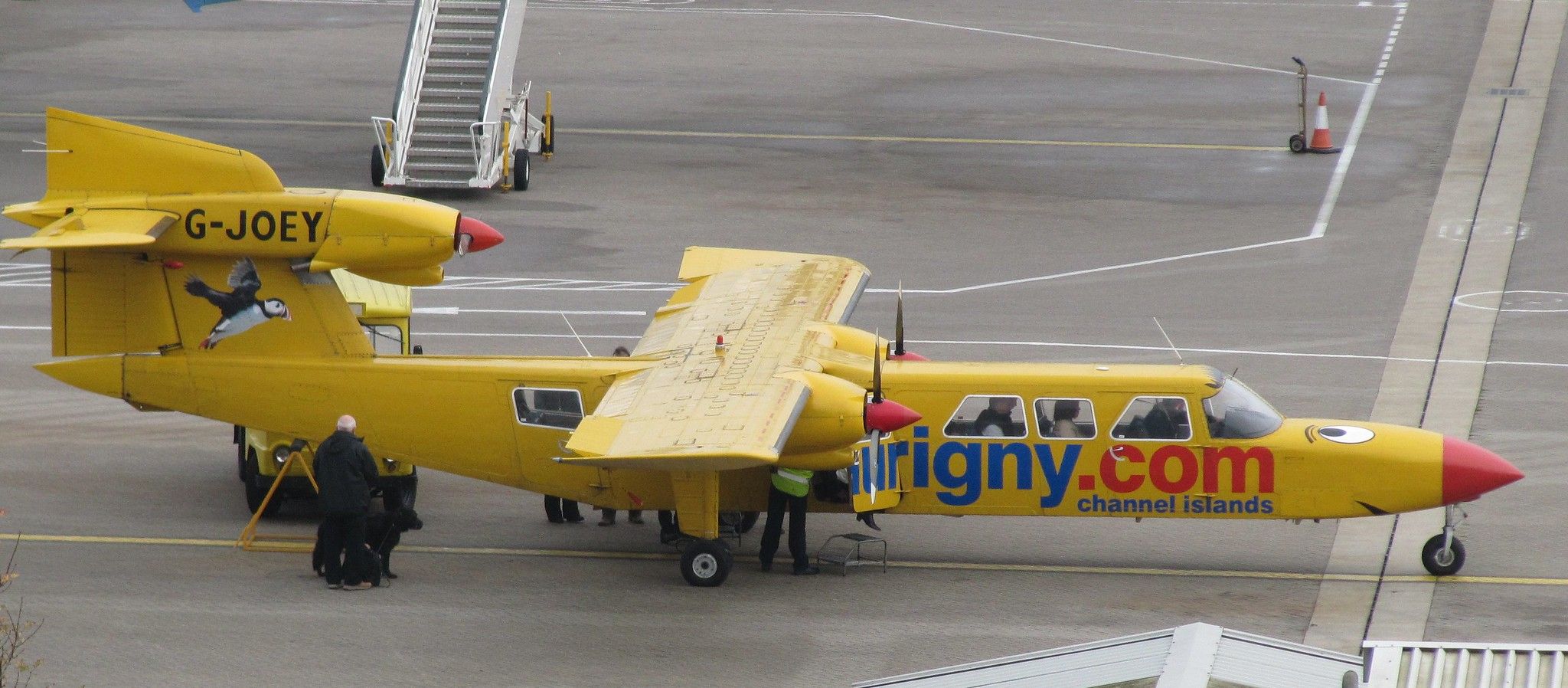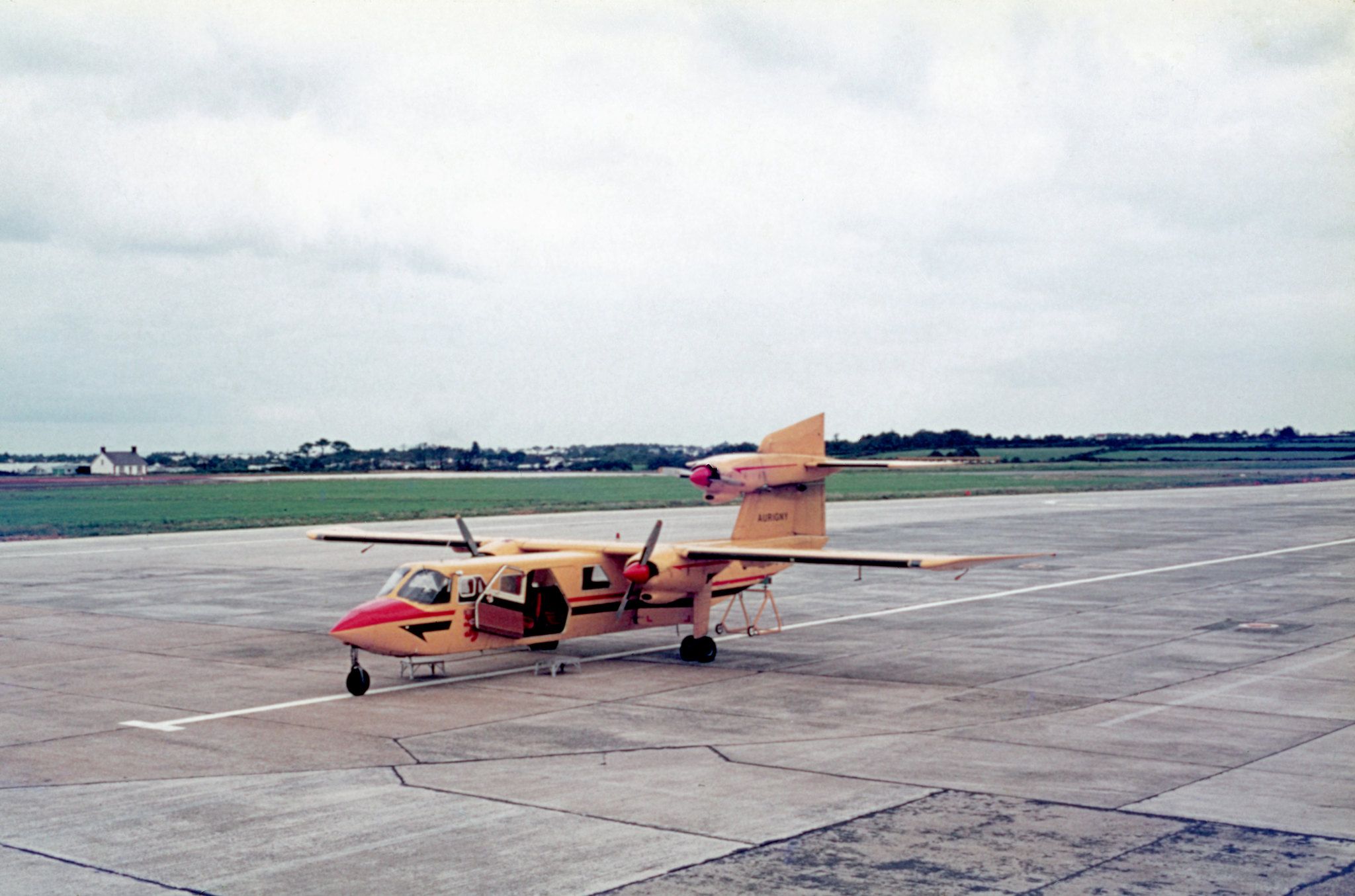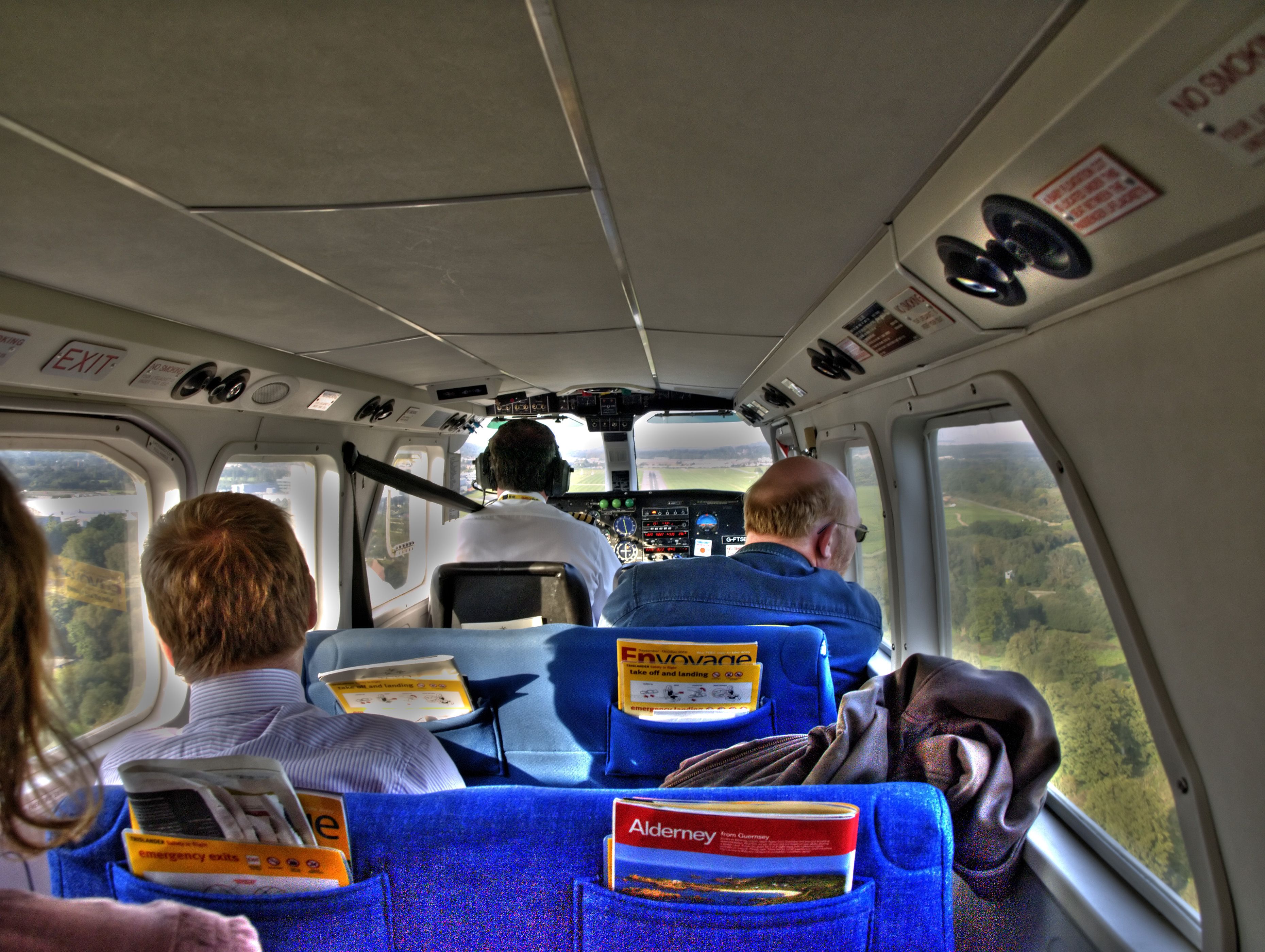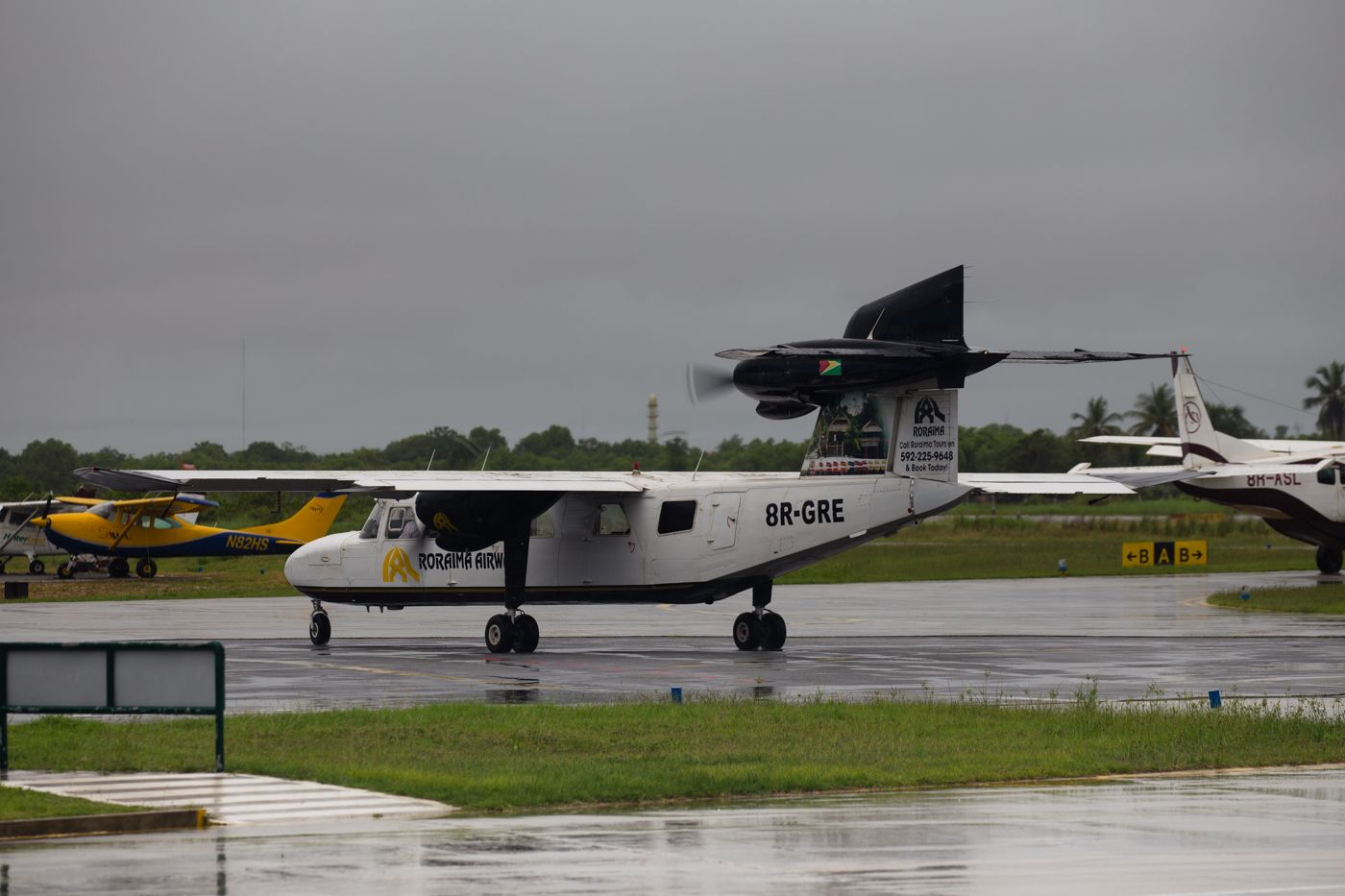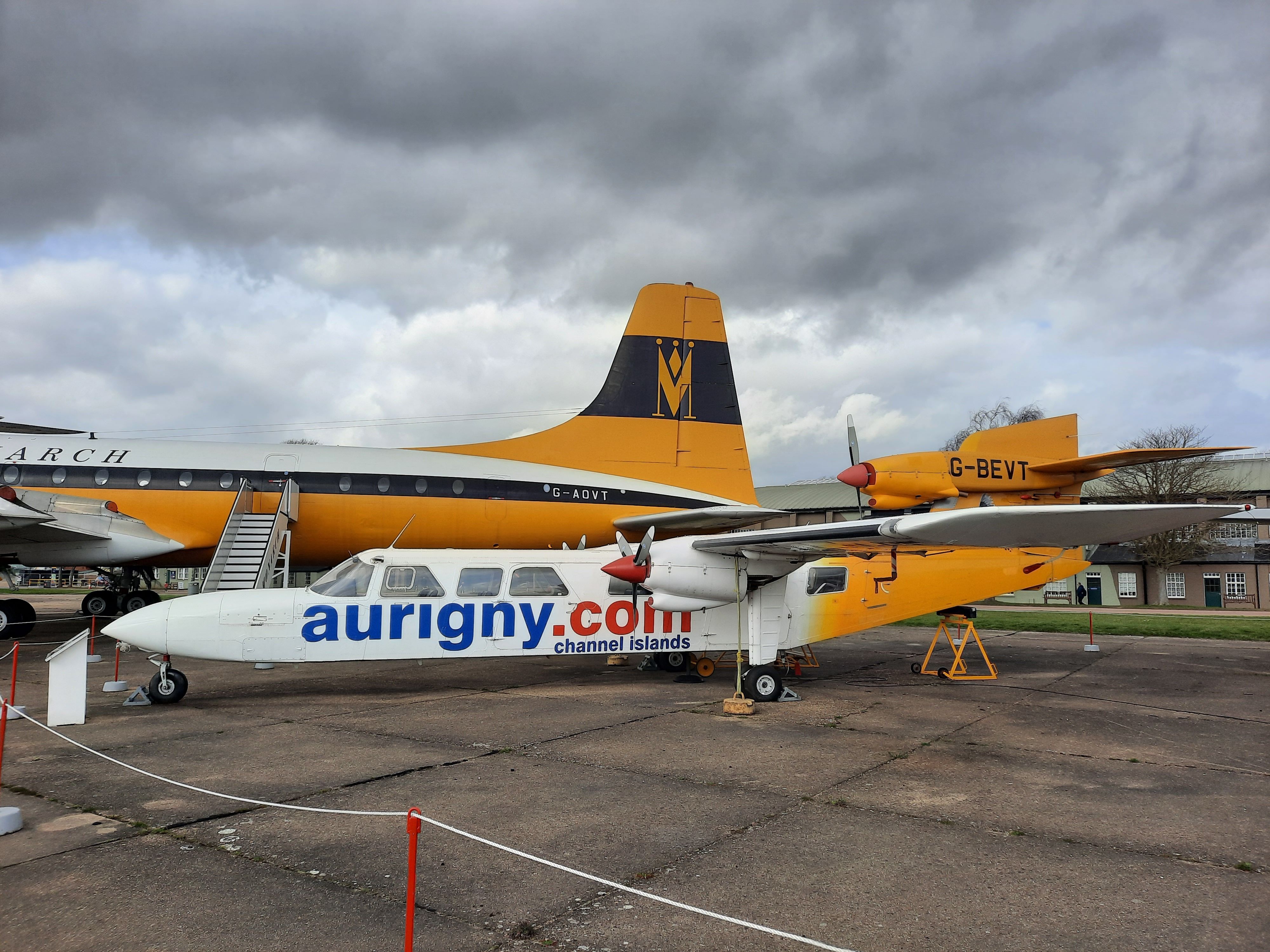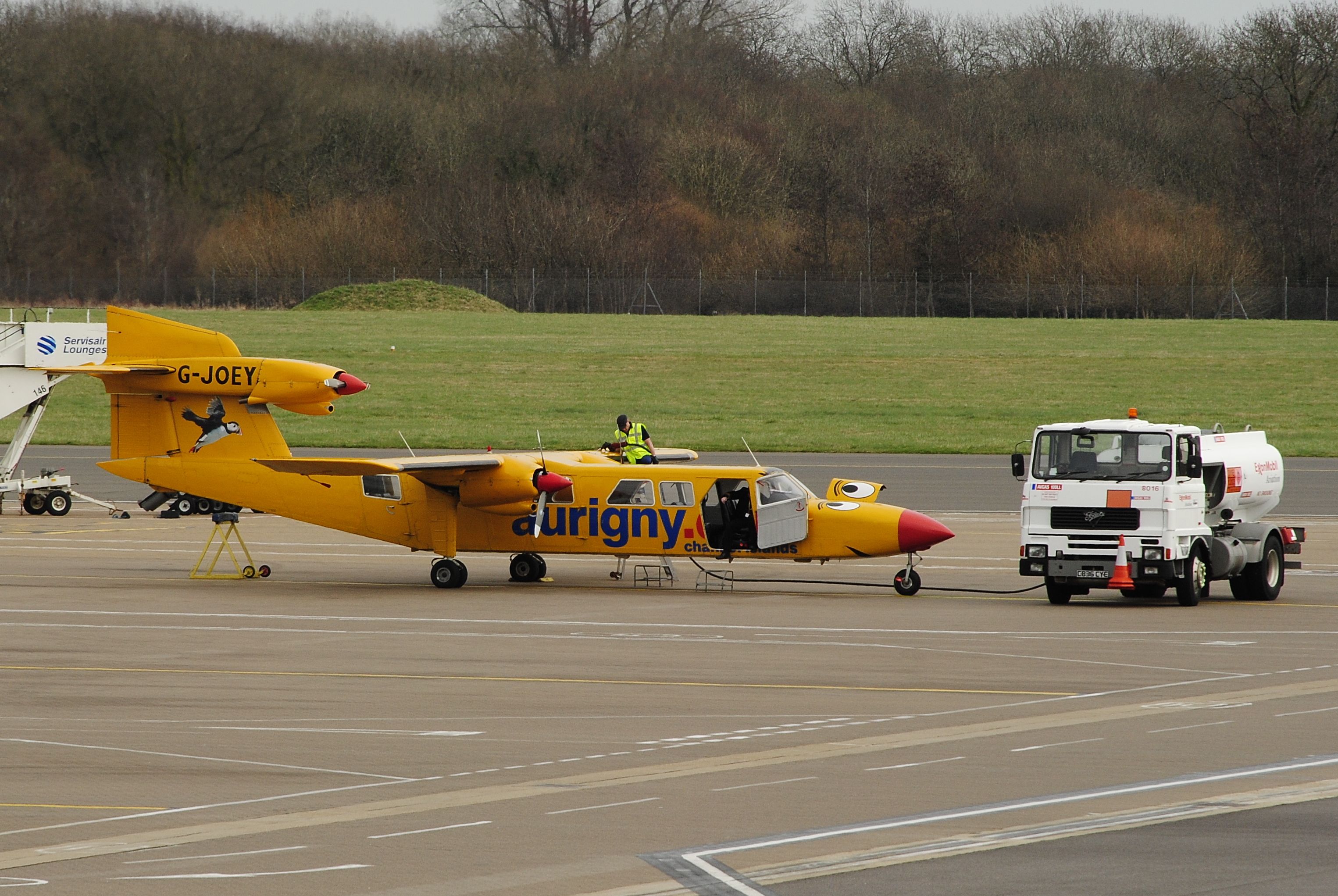Summary
- Launched in the 1970s, the Britten-Norman Trislander became the smallest three-engined airliner and gained popularity for its robustness and short-field performance.
- The design of the Trislander involved adding a third engine to lift the increase in size and weight, and the tail had to be redesigned to accommodate it.
- As of 2024, the aircraft remains in use as a regional airliner and island-hopper in South America and the Caribbean.
The Britten-Norman Trislander is unconventional, to say the least. However, during its time in service, it has carved out a market niche and has earned its place in aviation history. Let's take a closer look at how this little plane built on a small island off the south coast of England has achieved such status and how one of its numbers even developed its very own fan club.
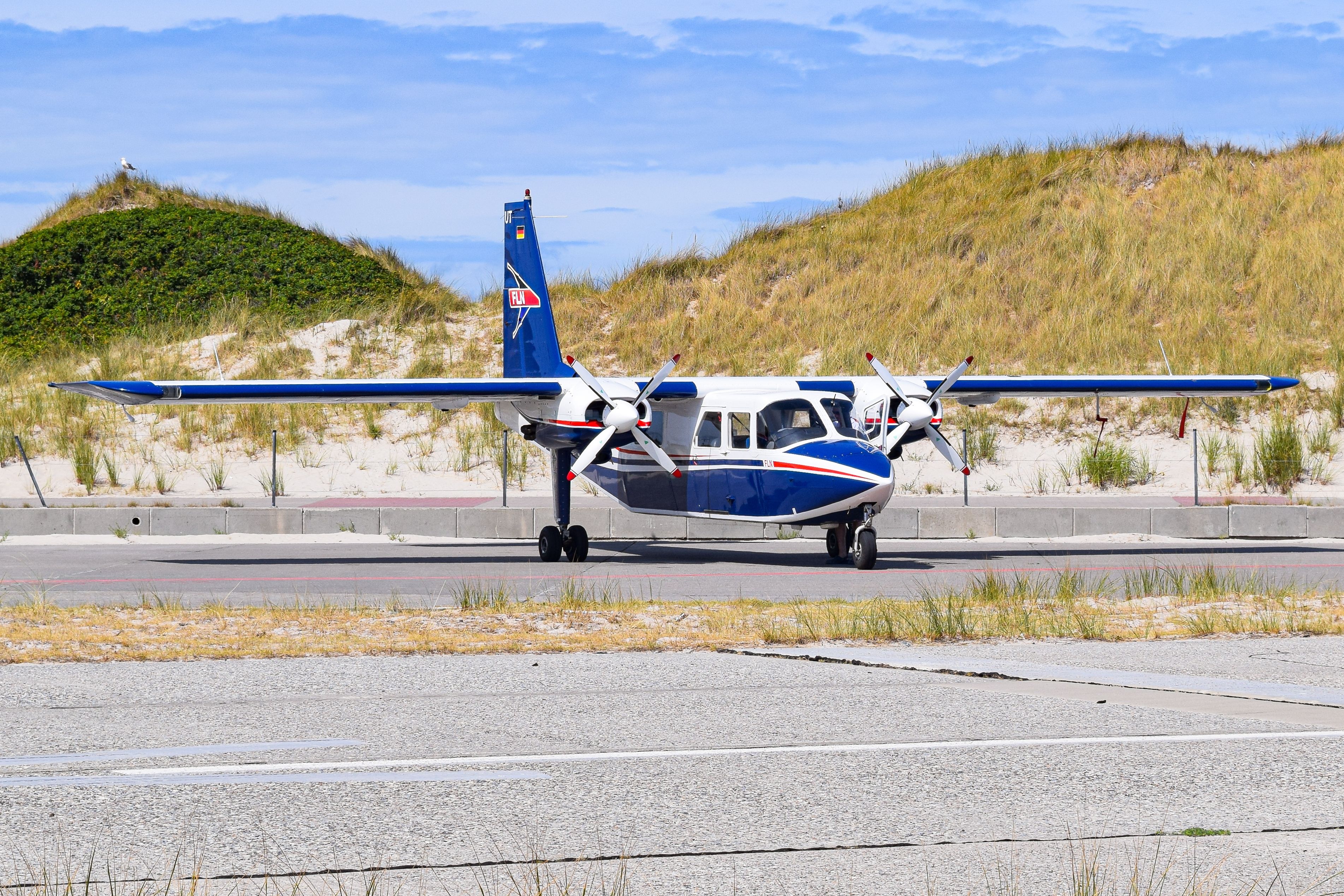
Production Of Britten-Norman’s Islander Aircraft Returns To The UK After 55 Years
The production facility will contribute to the economic growth of the Isle of Wight.Three is the magic number
On naming airliners with three engines, you would imagine that either the McDonnell Douglas DC-10 or the Lockheed Tristar would get a lot of mentions in the first instance. Pushing a little harder, responses such as the Boeing 727, Hawker Siddeley Trident, and perhaps even the Tupolev TU-154 would get mentioned.
Yet, there is one aircraft that rarely springs to mind. However, it has seen over 50 years of commercial airline service, has served niche air markets, and has provided vital service to smaller communities throughout its life. Meet the Britten-Norman Trislander, a genuinely unconventional little plane and the smallest three-engined airliner in the world.
Meet the Islander
The Trislander has its roots firmly embedded in the development of a piston-engined aircraft able to replace the aging De Havilland Dragon Rapide. Desmond Norman and his business partner John Britten began developing a new 8 to 10-seat airliner in 1964, designed to slot nicely into the markets where the Rapide, along with other aircraft in the class, were gradually being phased out.
Love aviation history? Discover more of our stories here
The design called for a lightweight design, with STOL performance (Short Take-Off and Landing) and the ability to operate off unpaved and grass runways. Their prototype first flew in June 1965, and given that the business partners had built their factory at Bembridge on the Isle of Wight, their new aircraft was appropriately named the 'Islander.'
This aircraft was a high-wing monoplane with a rectangular fuselage cross-section, conventional tail unit, and non-retractable, tricycle-type landing gear. The plane was designed for single-pilot operation and could carry up to nine passengers in a high-density layout.
A bigger Islander was required
As the Islander entered service and operators developed a liking for its robustness and ability to use short runways and to operate in and out of small, remote airfields, Britten-Norman set about re-designing the Islander to increase its capacity. Operators mooted the concept of a similar aircraft that could carry up to at least 50% more passengers.
The lead commercial customer for the Islander, Aurigny Air Services, based in the Channel Islands between Britain and France, required a lengthened version as increasing its fleet of Islanders was not economically viable for the small airline. Britten-Norman was asked for a larger, 16-seat aircraft that matched the no-nonsense dependability and ruggedness of the nine-seaters already in use.
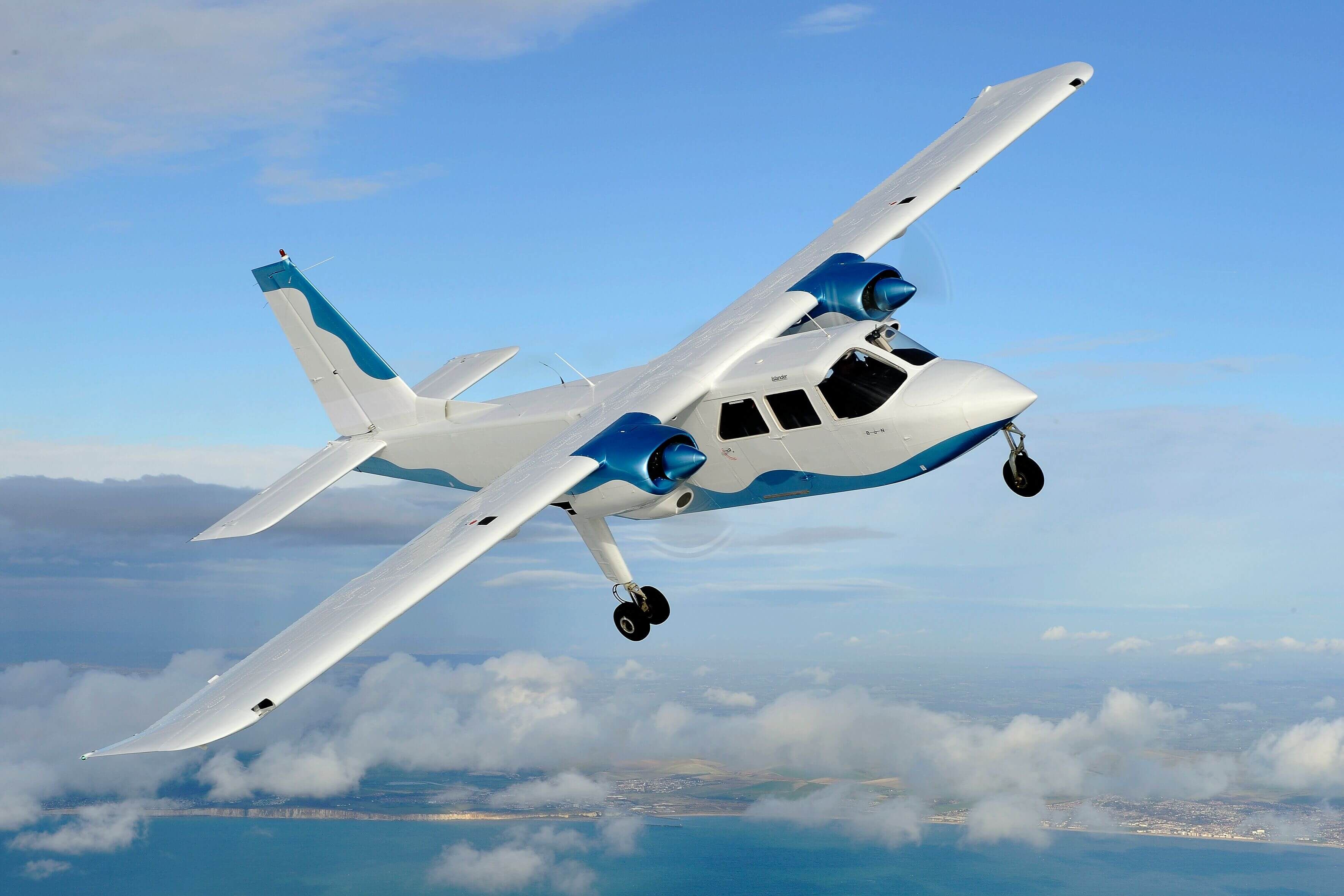
Still Going Strong: UK Manufacturer Britten-Norman Gets Islander Order
A new company in Malta will reportedly operate the aircraft.A truly unique aircraft is born
Thus, in 1970, the company unveiled the three-engined sister of the original Islander, which Britten-Norman designated the 'Trislander'. The Islander's fuselage had been lengthened by approximately 5 meters (16 ft). However, the most significant change to the design was the addition of a third Avro-Lycoming O-540-E4C5 piston engine to give the aircraft increased performance to lift the increase in size and weight.
A third engine was required as without it, given the aircraft's increase in size and weight, the engine-out performance was insufficient for the type to obtain a certificate of airworthiness. Incorporating a third engine always raises the issue of where to locate the additional power plant to avoid the problem of asymmetric thrust, yawing the aircraft to one side.
This issue is resolved by locating the third engine on the nose of the plane or in the center of the wing. However, neither of these solutions worked with the existing Islander design, so an alternative solution was sought. Rather than design a new airframe, Britten-Norman took a leaf from the book of much larger sisters and installed the third engine in the aircraft's tail.
The tail design of the Islander precluded the addition of a third engine without significant modification, requiring the team at Britten-Norman to undertake considerable work to re-design the tail structure of the Islander to accommodate the additional powerplant.
Other changes to the Islander design were the addition of a 2.3 meter (7ft 6in) fuselage 'plug' forward of the wing, strengthening the rear fuselage to support the additional weight of the tail and extra engine, and the installation of a new landing gear units with larger wheels and tires. Once finished, the Trislander could carry 17 passengers seated in a two-abreast configuration in eight bench-style rows, plus one passenger sitting alongside the pilot.
Popular amongst passengers, pilots, and beancounters alike
As there was no change in dimension in the width of the passenger cabin, the same wall-to-wall seating arrangement pioneered in the Islander was retained. Passenger access was facilitated via doors on either side of the fuselage, three on the starboard side of the cabin and two on the port side.
Again, the aircraft was designed for single-pilot operation., which had already proved popular from a cost-saving point of view with the Islander. The Trislander boasted exceptional low-speed handling characteristics, extended endurance over the Islander, and increased payload for passengers and baggage. Operators loved Its unparalleled capabilities, low noise signature, and economical operating costs.
Lastly, its ability to take off from 450 meters (1,476 feet) long landing strips, paired with the ability to use unprepared surfaces, made the Trislander an attractive proposition in the marketplace for those operators looking for a utility passenger aircraft suitable for multiple sectors per day, on very short flights.
The first Trislander rolls off the line
The prototype Trislander was converted from the second Islander built (G-ATWU) and first flew on September 11th, 1970. Later that same day, it passed to Farnborough in Hampshire, England, for the then-annual Farnborough Air Show, setting a record from a first flight to going on display at an airshow.
The first production Trislander flew in March 1971, incorporating the expanded span wings, which had only been an option on the Islander until then. Certification of the type was received in May 1971, and the first delivery was made to Aurigny Air Services, based in the Channel Islands, in June 1971. Production of the Trislander ceased in 1980, with 72 units built.
Trislander - the statistics
- Length – 15.01 m (49 ft 3 in)
- Wingspan – 16.15 m (53 ft 0 in)
- Height – 4.32 m (14 ft 2 in)
- Wing area – 31.31 sq m (337 sq ft)
- Maximum cruising speed – 166mph (267 kph)
- Service ceiling – 4,010 meters (13,150 ft)
- Maximum take-off weight – 4,536kg (10,000lb)
Operational history
The Trislander's unusual three-engine configuration, low-speed handling characteristics, and enviable short-field performance made the type popular on various inter-island routes worldwide. Examples of the type have flown in all corners of the world, from the Highlands and Islands of Scotland to beach resorts off the coast of Puerto Rico and from island hopping services around the Caribbean to serving remote island communities in the Philippines.
Want answers to more key questions in aviation? Check out the rest of our guides here
GB Airways leased a Trislander between May 1989 and June 1991, deploying it on the world's shortest international air service between Gibraltar and Tangier, Morocco – around 85 miles (139km). Meanwhile, Loganair used its three-engined commuters on routes from Glasgow to the Outer Hebrides and Orkney isles. One of the services flown by Loganair's Trislanders included operating from the legendary beach runway at Barra Airport.
The largest airline to operate the type was Air Seychelles, which used its Trislander to ferry passengers from the capital, Mahe, to the luxury vacation resort on Praslin Island before De Havilland Twin Otters eventually replaced it. It is believed that three examples are still flying in Guyana. Roraima Airways is reported to operate this small fleet on charter and air taxi work alongside three Islanders.
Aurigny and the Trislander
Aurigny, the launch customer, operated 16 Trislanders in all, with the airline's final flight using the type taking place in May 2017 before making way for Dornier 228s. However, three of the airline's aircraft have been preserved. One (registered G- BEVT) was flown to the Imperial War Museum in Duxford, Cambridgeshire, in June 2017 for conservation with the British Airliner Collection. Another Aurigny Trislander was retired to the Solent Sky Museum in Southampton, England (G-RLON).
A third Trislander (G-JOEY) enjoyed legendary status with the airline. With its eye-catching registration alongside its smile, jolly painted 'eyes,' and red nose cone, this aircraft became known as the face of Aurigny and became a firm favorite amongst the airline's customers.
The airline even set up a fan club for the little yellow airliner ('The Joey Club') and would post updates about the aircraft and pictures to the club's members. G-JOEY is now spending its retirement at a tourist attraction called 'Oatlands' on the island of Guernsey. It was saved from scrapping following a public campaign to keep it on the island of Guernsey once retired.
A lasting legacy
As of 2024, the aircraft remains in passenger service with four airlines based in South America and the Caribbean. In Anguilla, charter and scheduled carrier Anguilla Air Services operates one airframe, which was delivered to the carrier in 2019. The aircraft, registered VP-AJR, is used on short-haul hops between Clayton J. Lloyd International Airport (AXA), Sint Marteen's Princess Juliana International Airport (SXM), and Robert L. Bradshaw Airport (SKB) on St. Kitts.
Guyana's Roraima Airways holds three Trislanders, having operated the type since 2016. Set out in an 18-seat configuration, the Trislander is often deployed on tourist charter flights out of Roraima Airways's base at Eugene F. Correia International Airport (OGL).
Two Puerto Rican air operators each hold one example of the aircraft. Air Flamenco uses the Trislander for charter operations and scheduled services between Vieques's Antonio Rivera Rodríguez Airport (VQS) and Luis Muñoz Marín International Airport (SJU) in San Juan, while island hopper Vieques Air Link's aircraft is utilized as a freighter.
Although the Trislander may not have ultimately been a huge commercial success, selling fewer than one hundred examples, it carved a niche for itself, operating high-frequency, short sector length scheduled and charter flights across the globe for over fifty years. For an unusual-looking, small passenger plane originating from a tiny island, that's quite a legacy.
Have you flown on a Britten-Norman Trislander? What was your experience? Let us know in the comments.

